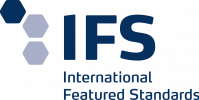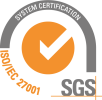Information Security Policy
INDICE
1. INTRODUCTION 2. SCOPE 3. OBJECTIVE 4. COMMITMENT OF MANAGEMENT 5. LEGAL FRAMEWORK 6. PRINCIPLES AND GUIDELINES6.1 Mission and Objectives
6.2 Prevention
6.3 Detection
6.4 Response
6.5 Recovery
7. SECURITY ORGANIZATION 8. DISSEMINATION, UPDATE, AND REVIEW OF THE POLICY 9. STRUCTURE OF DOCUMENTATION 10. PERSONAL DATA 11. RISK MANAGEMENT 12. NON-COMPLIANCES 13. THIRD PARTIES 14. TRAINING AND AWARENESS 15. TELEWORK 17. BACKGROUND CHECKS 18. MANAGEMENT RESPONSIBILITIES 19. APPROVAL AND ENTRY INTO FORCE 1. INTRODUCTION VIÑA COSTEIRA, hereafter referred to as the Organization, manages a significant amount of sensitive information that is crucial to its performance, sustainability, security, and ability to maintain business operations. This information asset includes:- Information related to production and management necessary for the Organization’s activity.
- Intellectual property, consisting of all information, knowledge, and know-how within the Organization.
- Information about its partners and third parties, which could harm their brand image, or result in legal actions if altered or disclosed.
- Employee-related information, which, if disclosed, would violate privacy.
- Information: Any data stored electronically or on paper belonging to the Organization, employees, suppliers, or partners.
- Materials: All physical elements that support processes (laptops, servers, printers, storage devices, etc.).
- Software: All programs or executables that contribute to data operations (operating systems, monitoring software, office suites, executables, etc.).
- Network: Communication devices used to interconnect computers or remote elements in an information system (routers, firewalls, communication lines, etc.).
- Personnel: All individuals involved in the information system (internal personnel, subcontractors, collaborators, etc.).
- Locations: Any locations the Organization uses, including facilities and the necessary physical requirements.
- Organizational Structure: All elements forming the Organization and its functions (organizational model, business processes, etc.).
- Ensuring the protection of partner information throughout its lifecycle.
- Facilitating continuous improvement of security processes, procedures, products, and services.
- Meeting legal and other partner-specific requirements related to information security.
- Ensuring business continuity through contingency plans for critical services.
- Ensuring adequate resources for security and assigning roles and responsibilities.
- Raising awareness and training personnel about the importance of the ISMS and its contribution to business goals.
- Protection of partner information against unauthorized changes, loss, or disclosure.
- High security in services provided to partners.
- Compliance with the ISMS to minimize risks for partners.
- Promotion of a security culture throughout the Organization.
- Incident management to minimize impacts on the Organization and partners.
- EU Regulation 2016/679 regarding data protection and the free movement of data.
- Organic Law 3/2018 on Personal Data Protection and Digital Rights.
- Royal Decree 311/2022 on the National Security Framework.
- Royal Decree 203/2021 on electronic procedures in the public sector.
- Other relevant Spanish laws regarding intellectual property, electronic access to public services, and administrative procedures.
6.1 Mission and Objectives
In the Organization, we develop at least the following objectives:
- Use of corporate ICT resources, such as email, internet access, computing and communication equipment.
- Management of inventoried information assets, categorized and associated with a responsible party.
- Implement mechanisms to ensure that anyone who accesses or may access information assets understands their responsibilities, thus reducing the risk associated with improper use of these assets.
- Physical security, ensuring that information assets are located in secure areas, protected by physical access controls appropriate to their level of criticality. Systems and information assets within these areas must be sufficiently protected against physical or environmental threats.
- Security in the management of communications and operations, ensuring that information transmitted through communication networks is adequately protected based on its sensitivity and criticality level, using mechanisms that guarantee its security.
- Access control, limiting access to information assets by users, processes, and information systems by implementing identification, authentication, and authorization mechanisms according to the criticality of each asset.
- Acquisition, development, and maintenance of information systems while considering information security aspects at all stages of the lifecycle of these systems.
- Management of security incidents by implementing appropriate mechanisms for proper identification, recording, and resolution of security incidents.
- Continuity management by implementing appropriate mechanisms to ensure the availability of information systems and maintaining business process continuity.
- Authorize systems before they are operational.
- Request periodic reviews by third parties to obtain an independent assessment.
- When there are specific security requirements for any service, senior management will communicate them to the IT department for analysis and implementation.
- Establish mechanisms to respond effectively to security incidents.
- Designate a point of contact for communications regarding incidents detected in other departments or external organizations.
- Establish protocols for exchanging information related to the incident, ensuring timely and accurate sharing of relevant data for effective resolution.
- The Senior Management will be in charge of approving this policy and will be responsible for the authorization of its modifications, as well as all the documented information of the entity’s ISMS.
- The Security Manager will be the one to take the appropriate decisions to meet the requirements of information security and services. He/she shall have the following functions:
- Overseeing compliance with this Policy, its rules and derived procedures.
- Advise on security matters to the members of the Security Committee as required.
- Notify all personnel of changes to this policy.
- Coordinate the actions of implementation, maintenance and improvement of the Organization’s ISMS and its audits, together with the Systems Manager.
- The Systems Manager, who will be in charge of managing the technical and security requirements of the information systems.
- All the Organization’s personnel, both internal and external, will be responsible for complying with the present Information Security Policy within their work area, as well as for applying all the documented information of the controls and security measures of the Organization’s ISMS in their work activities that affect their performance in information security.
- Regularly, at least once a year.
- When the information handled changes.
- When the services provided change.
- When a serious security incident occurs.
- When serious vulnerabilities are reported.
- To keep the personnel most directly related to the handling of information and the systems that deal with it informed about existing security procedures, risks, protection measures, protection plans, etc.
- To make the personnel, in general, aware of the importance of security and of the basic procedures for handling and exchanging information.






